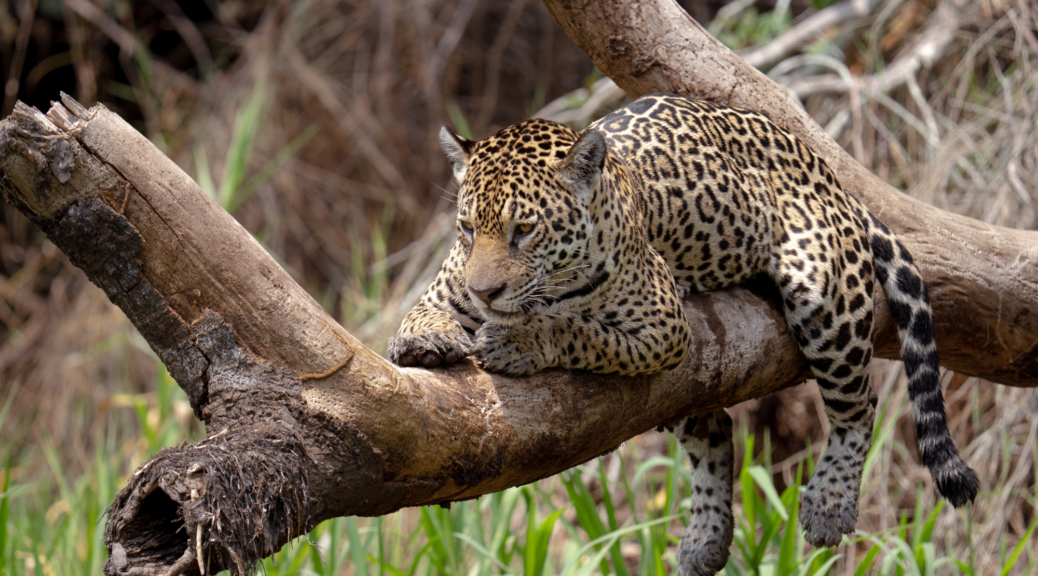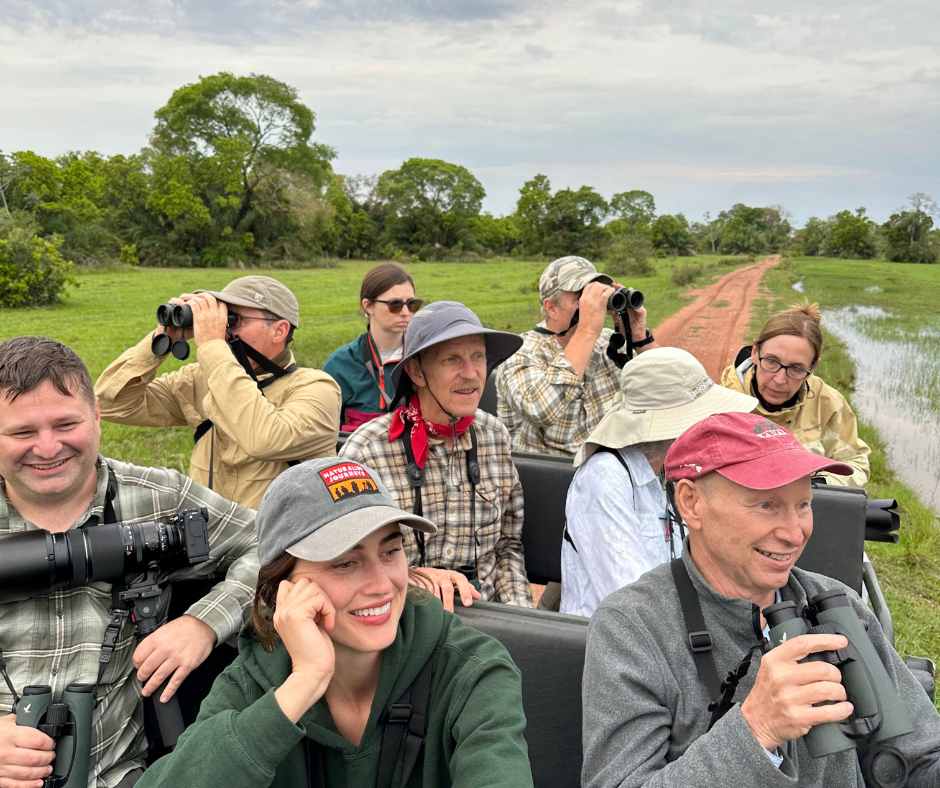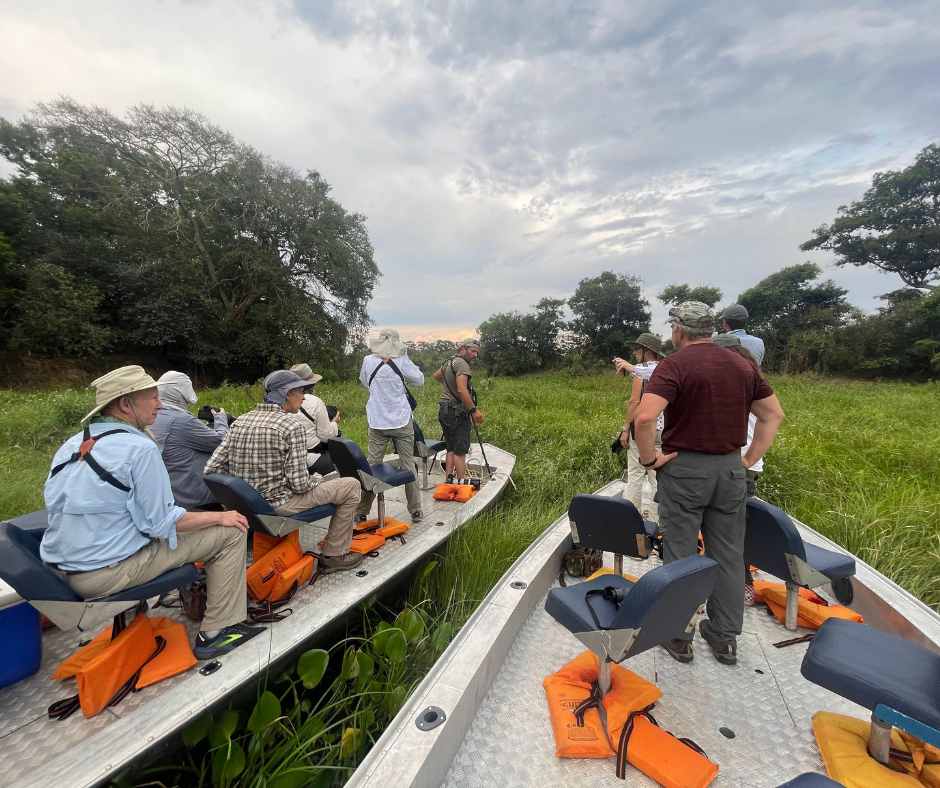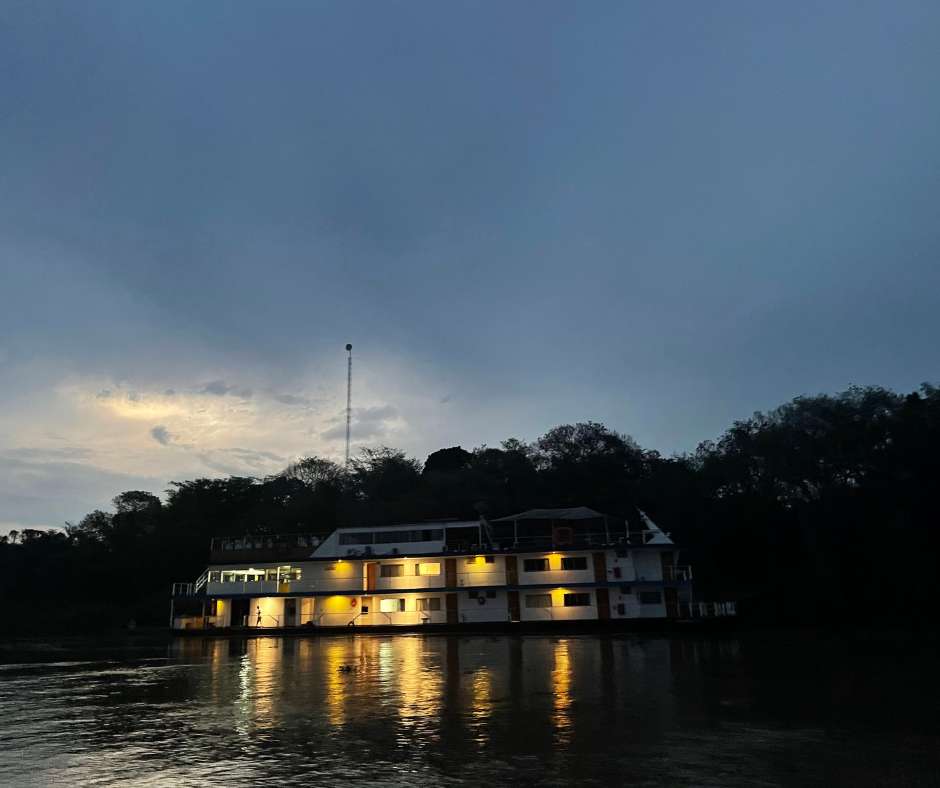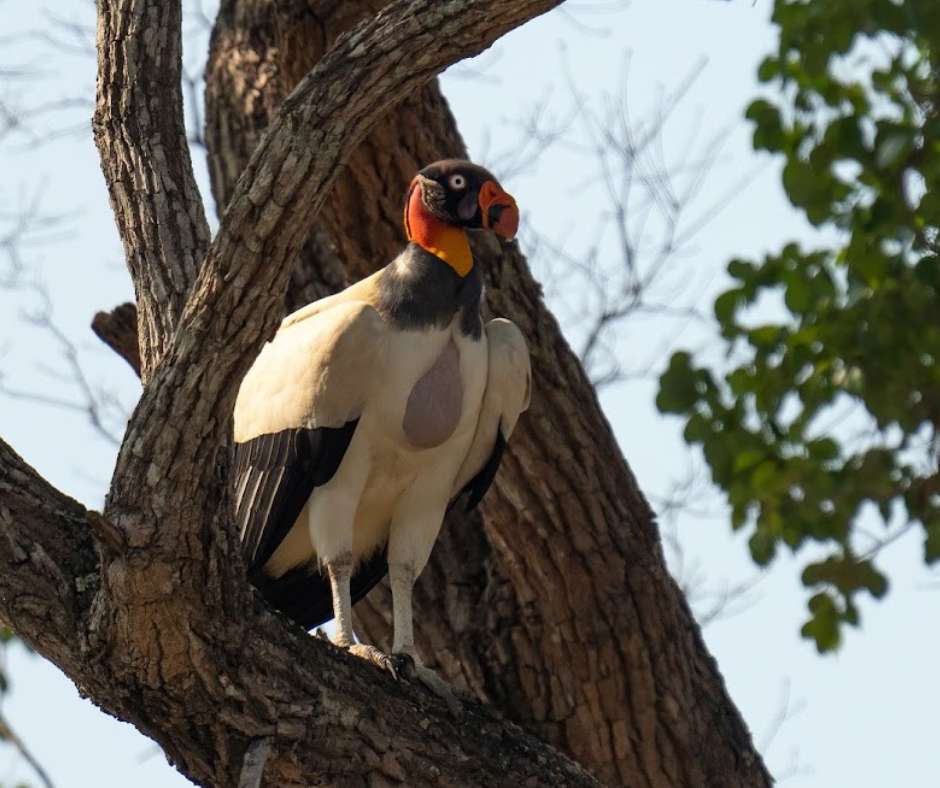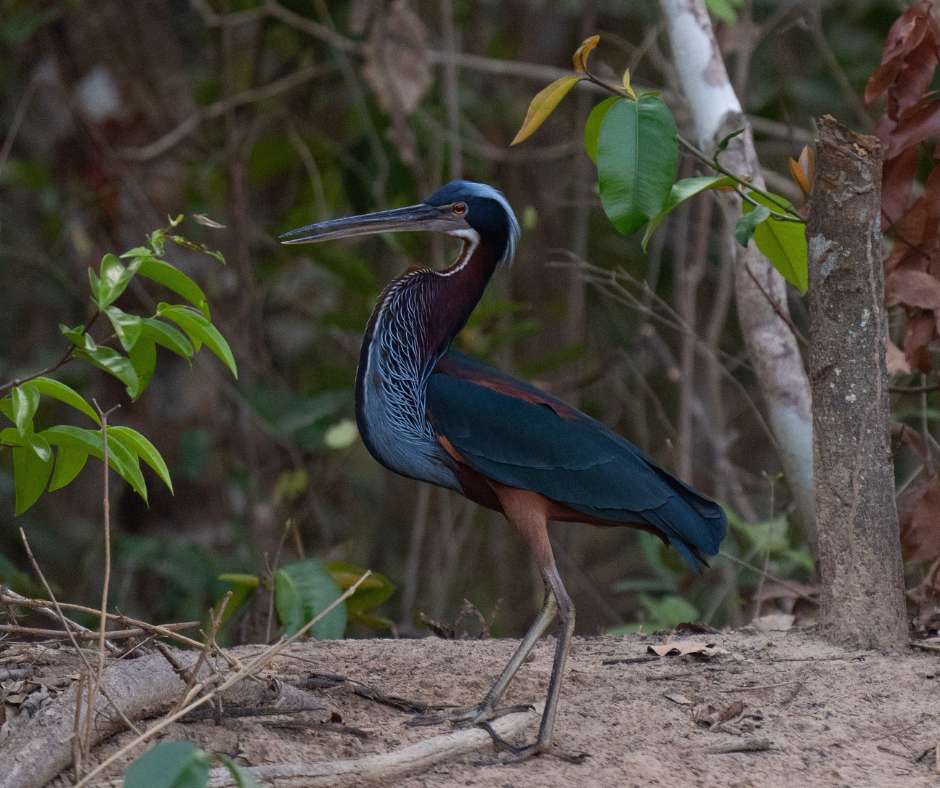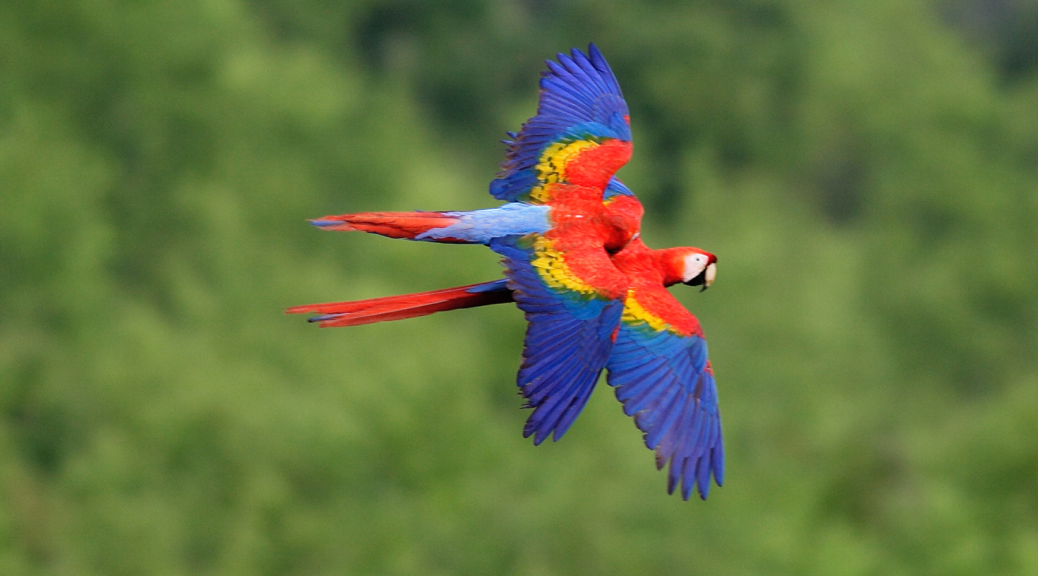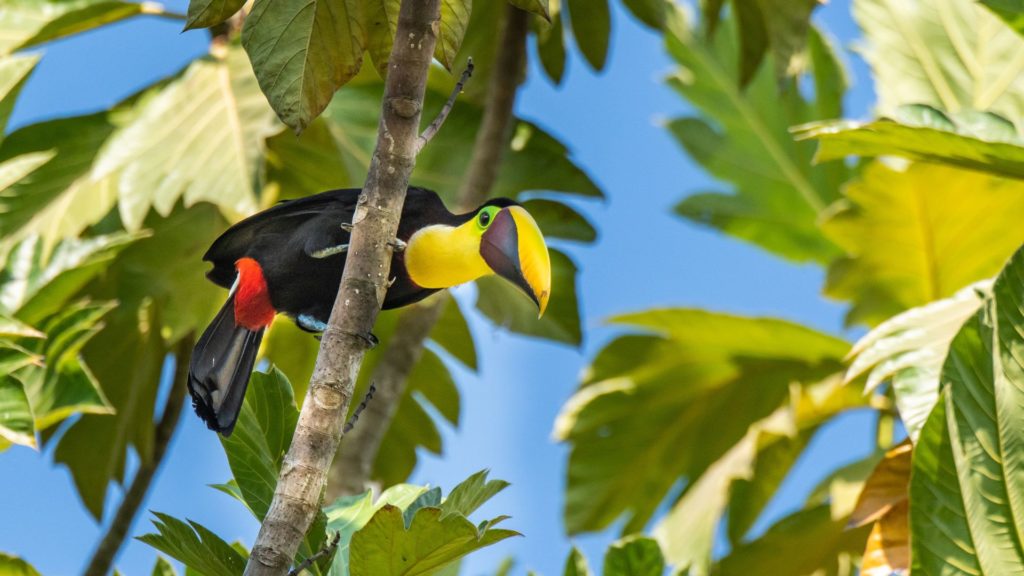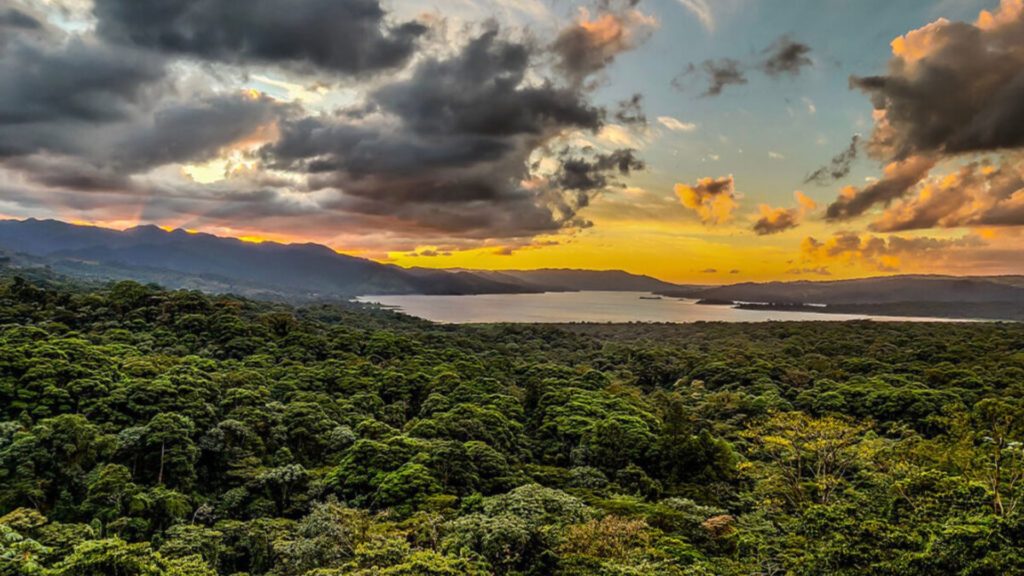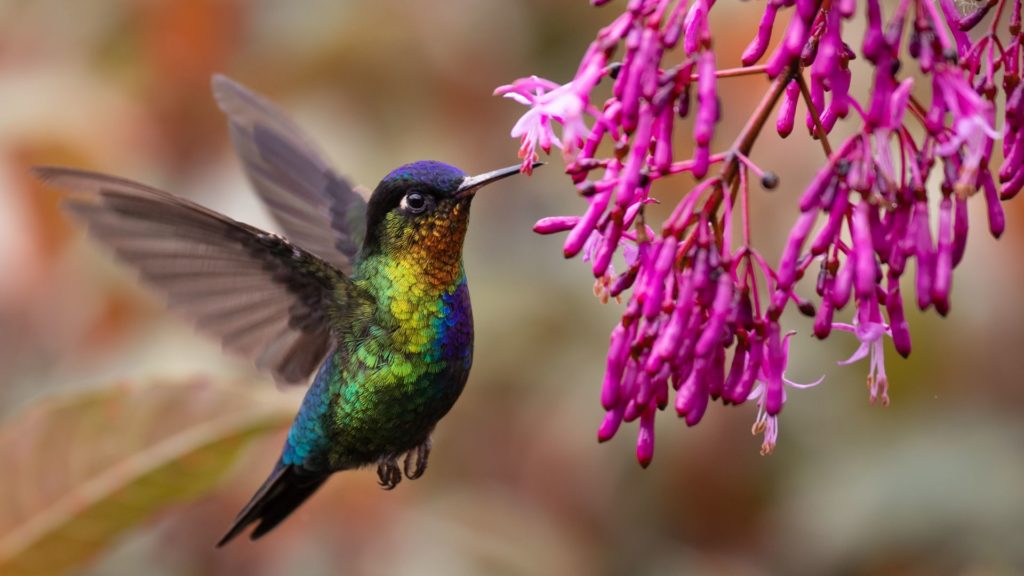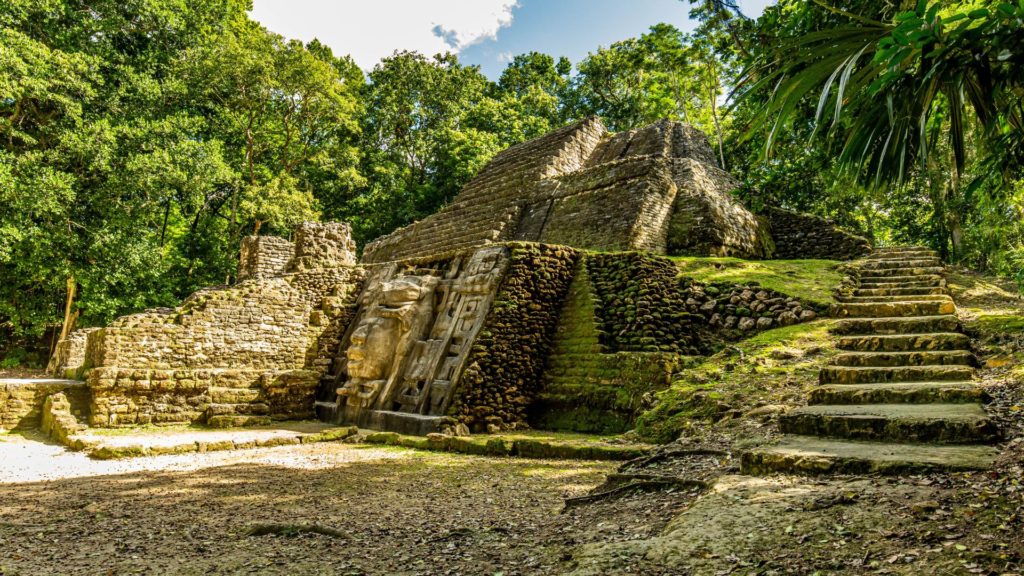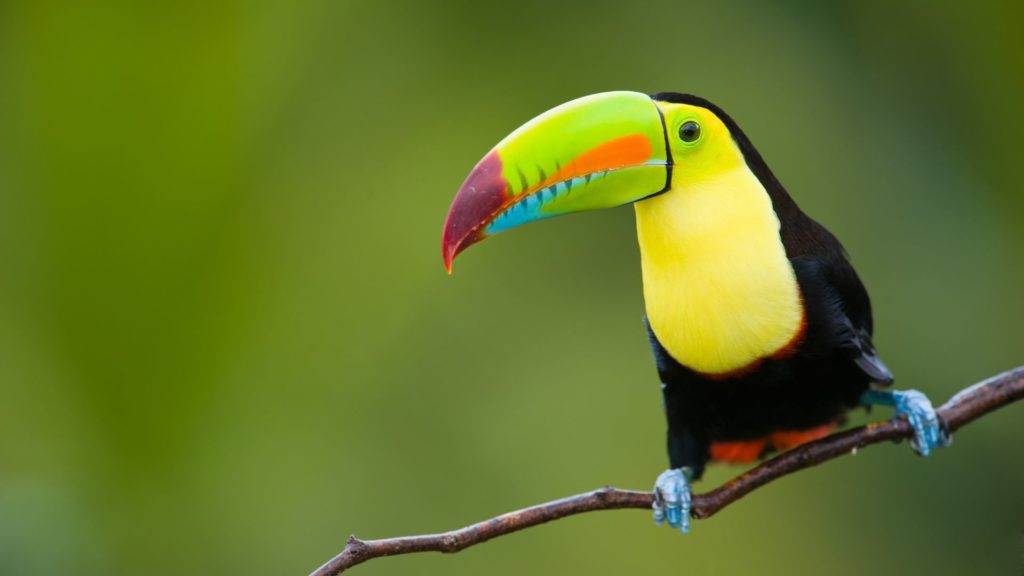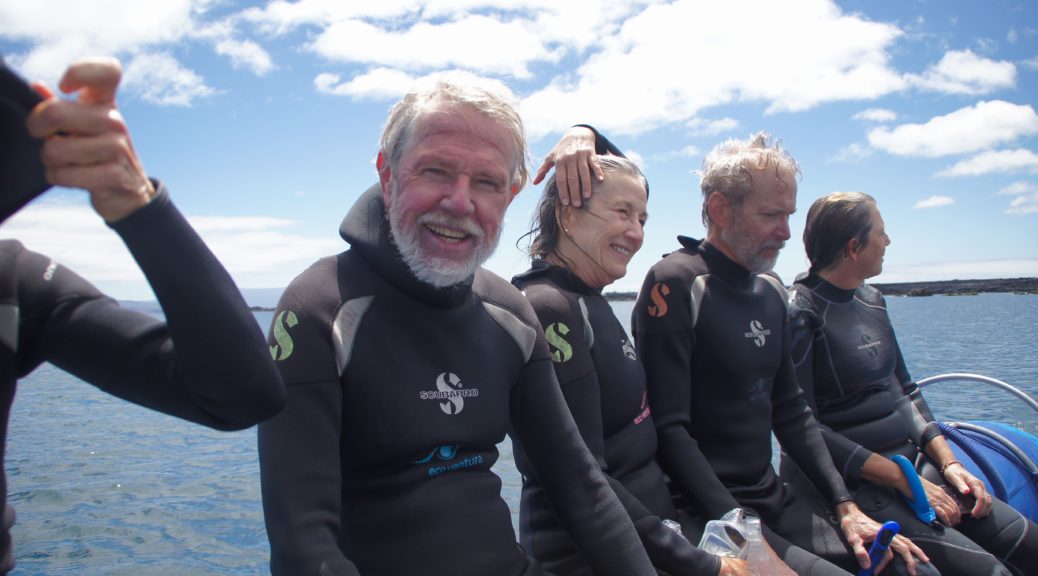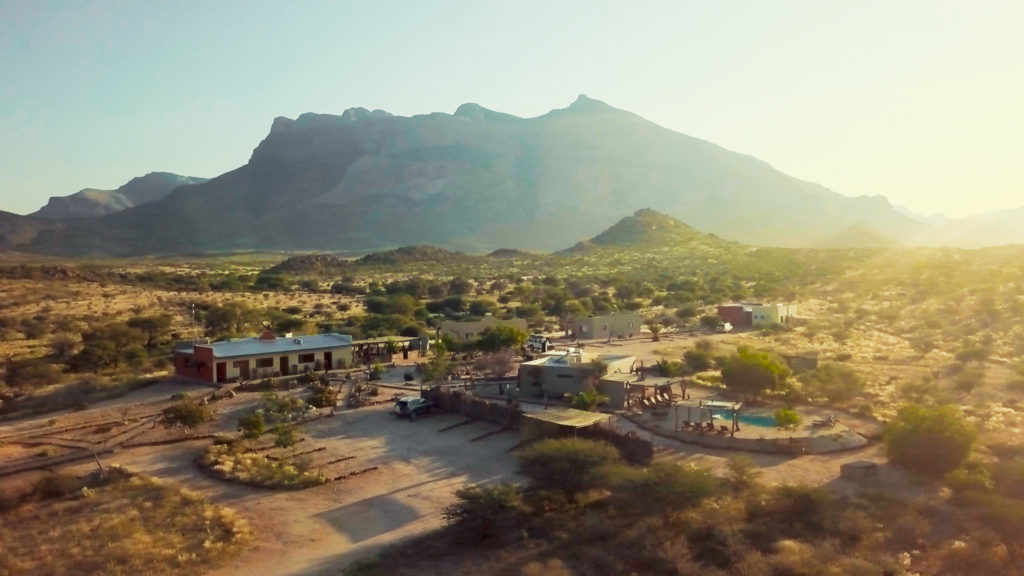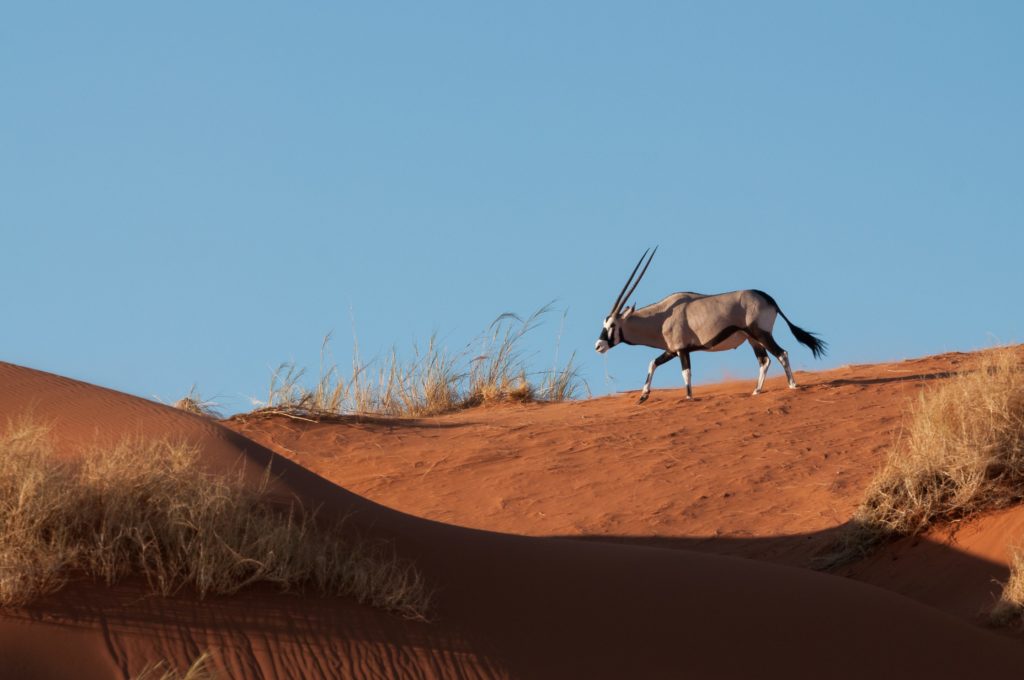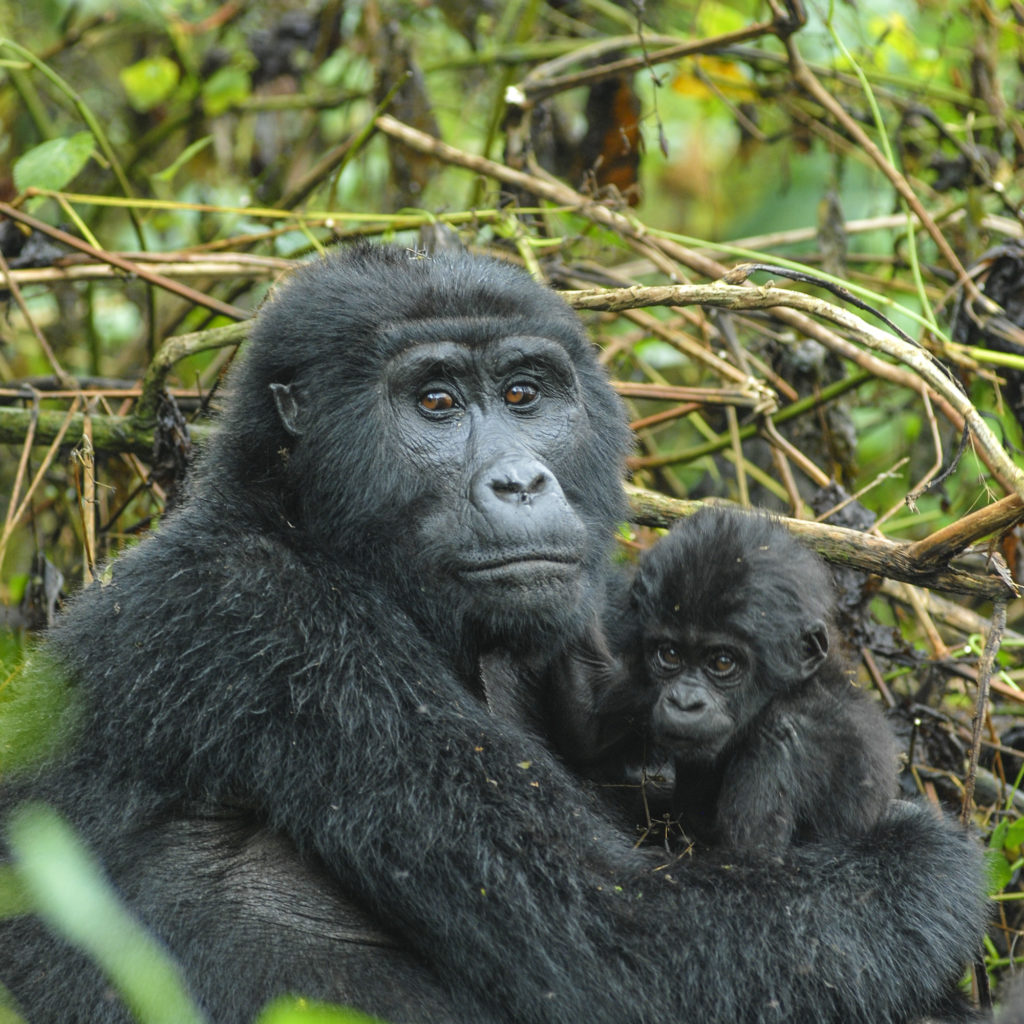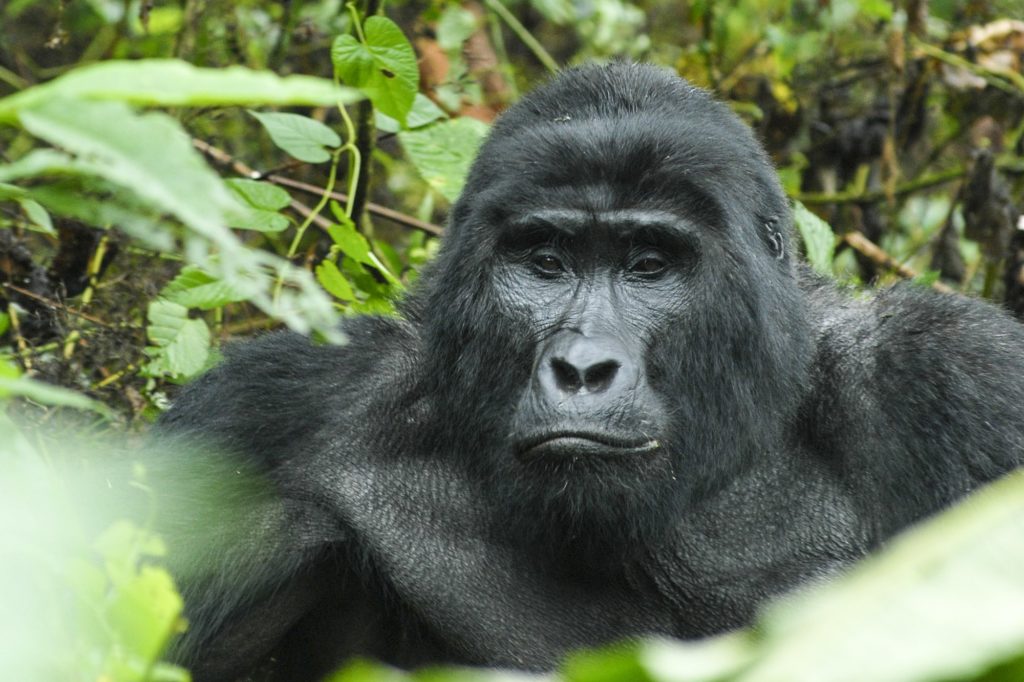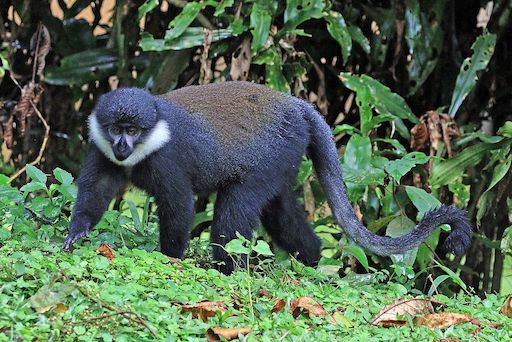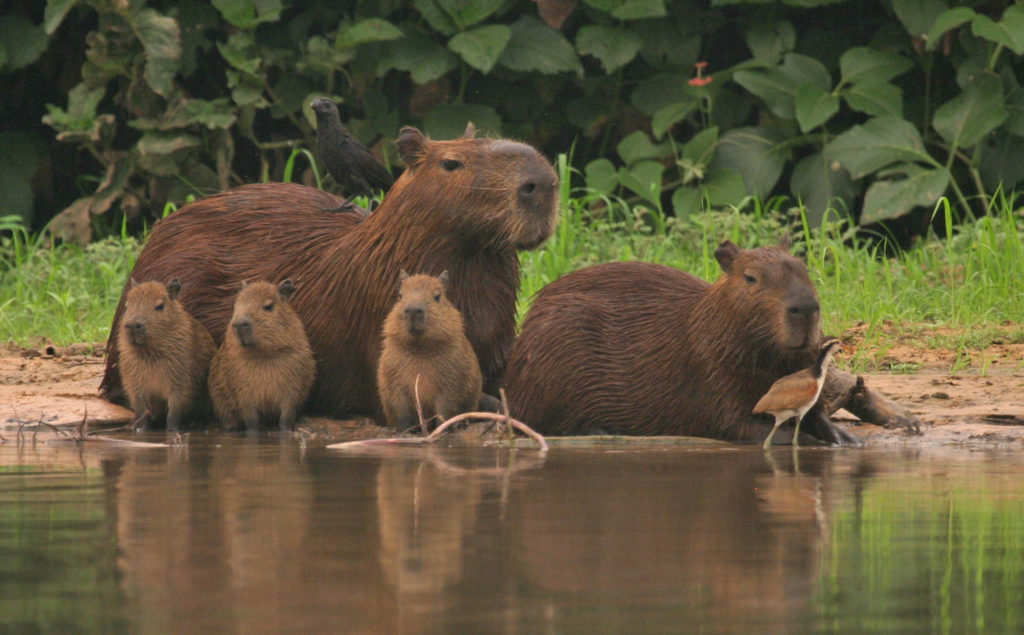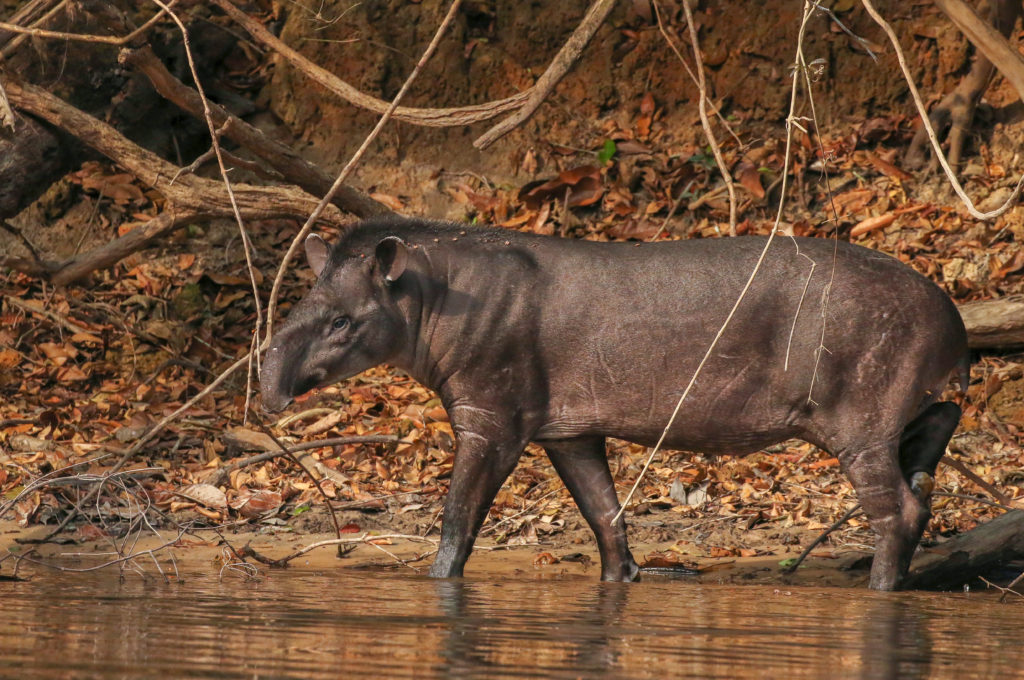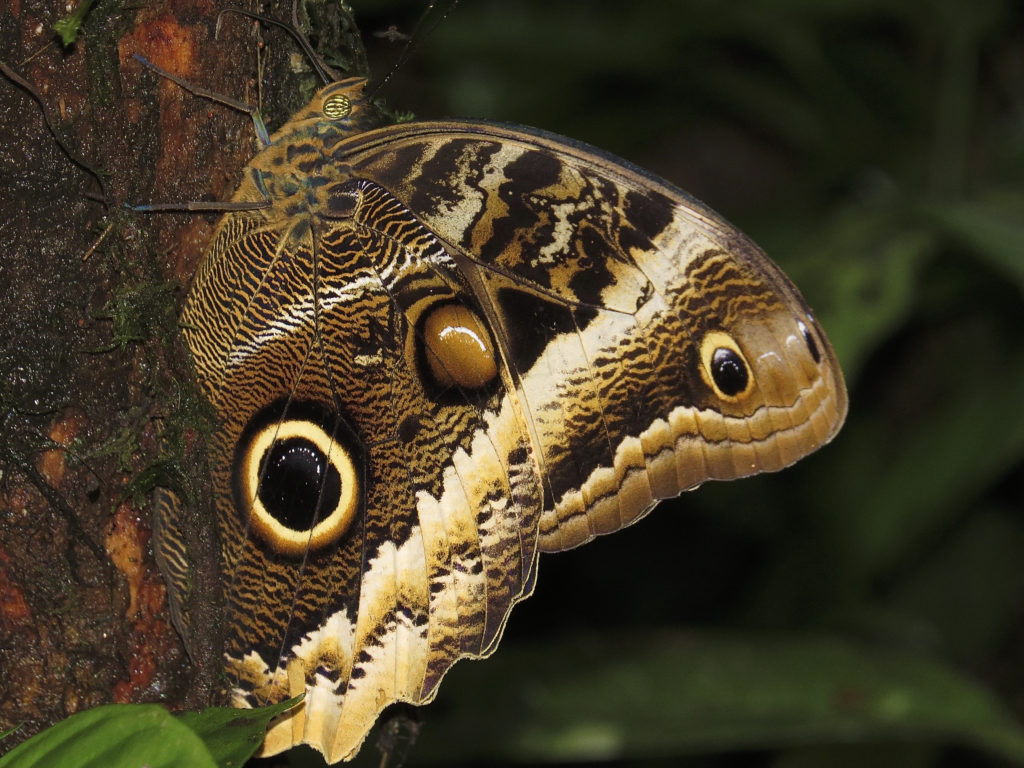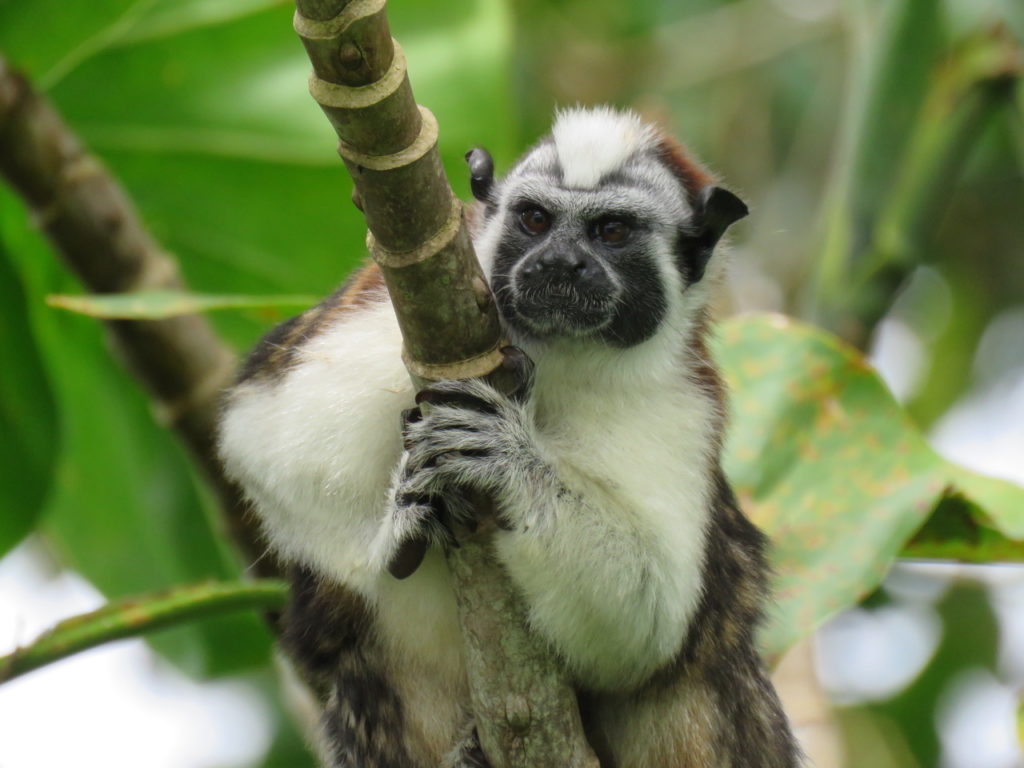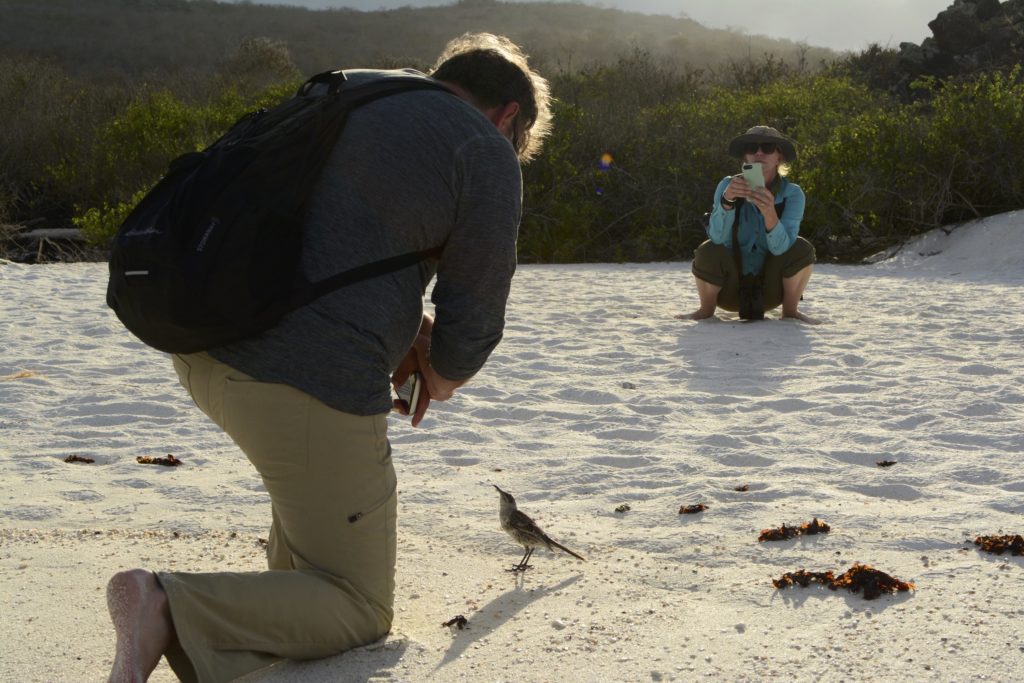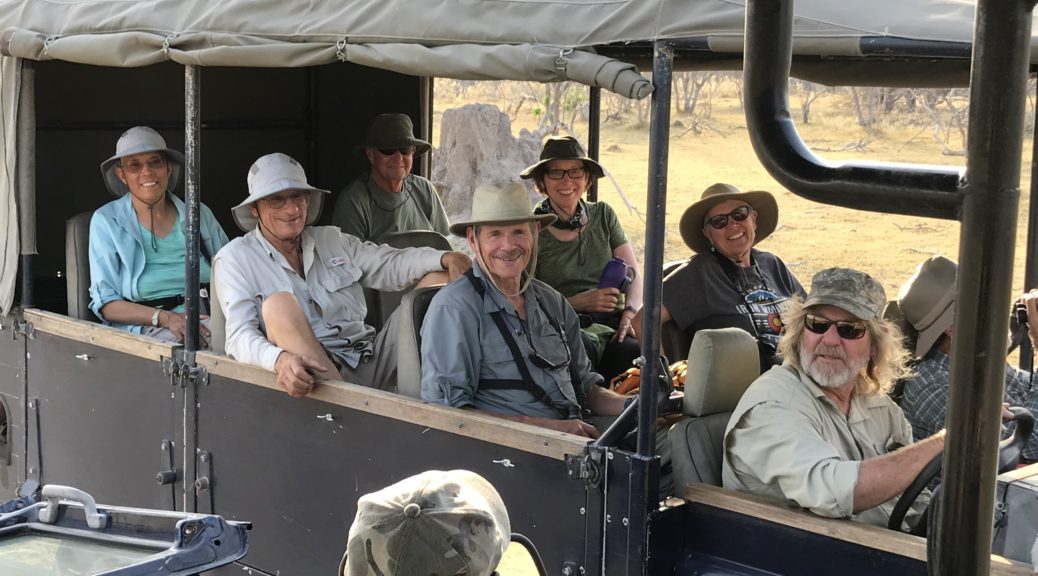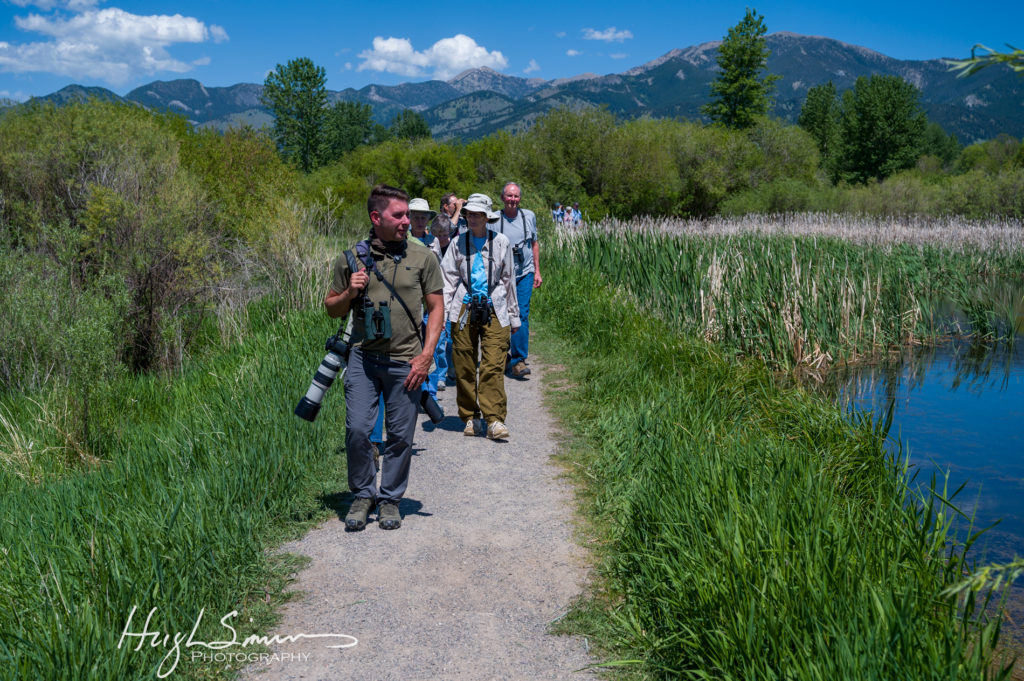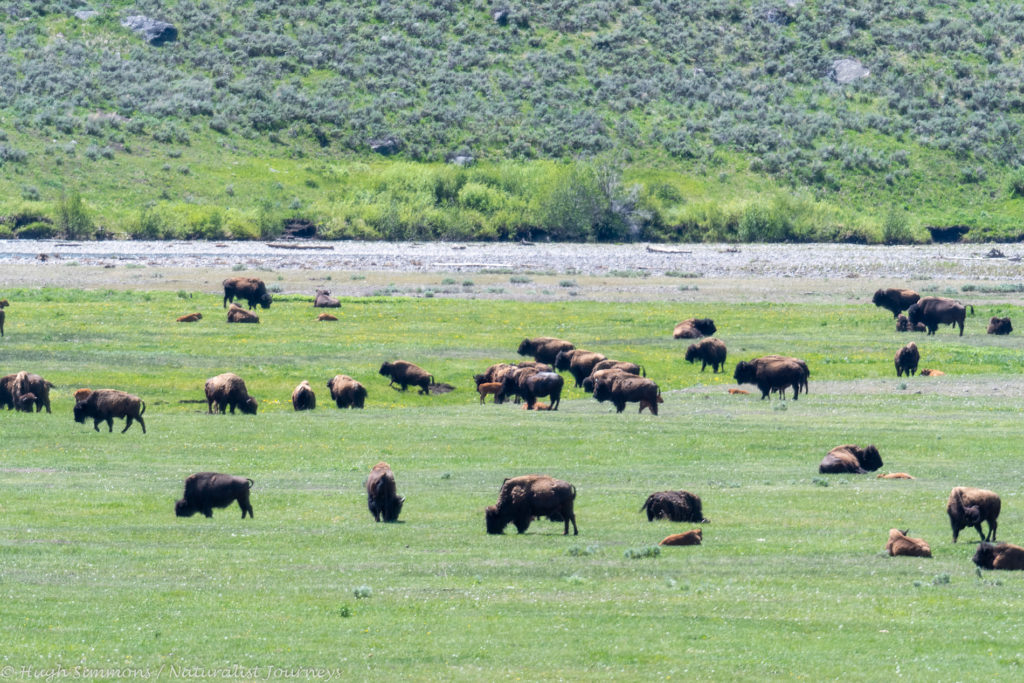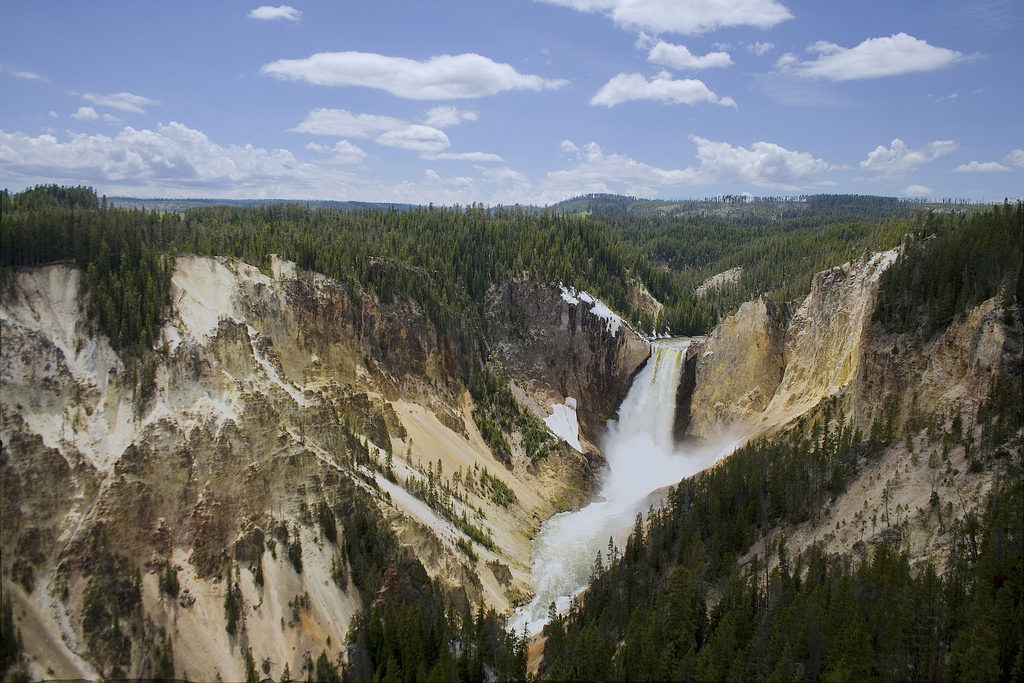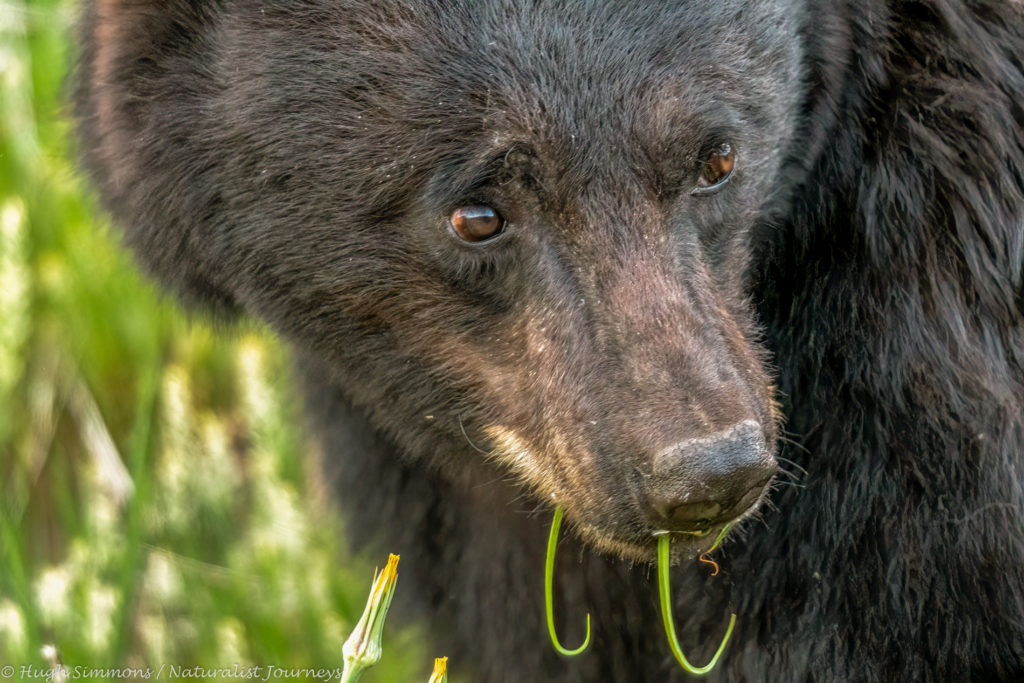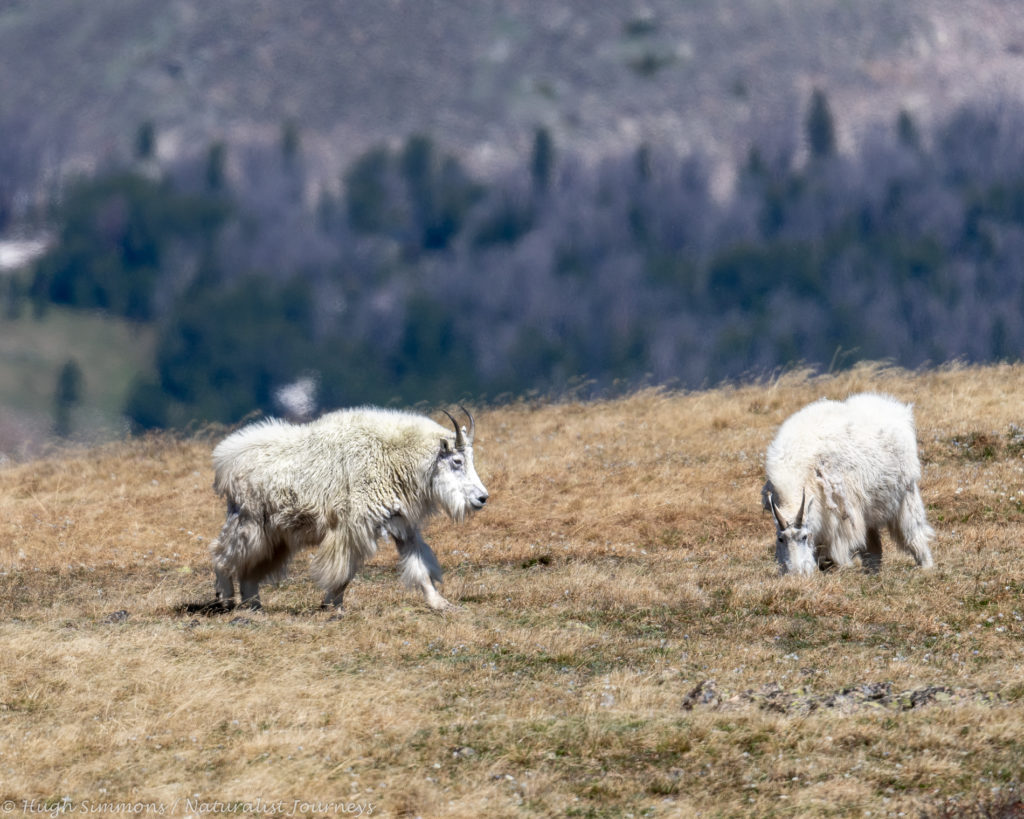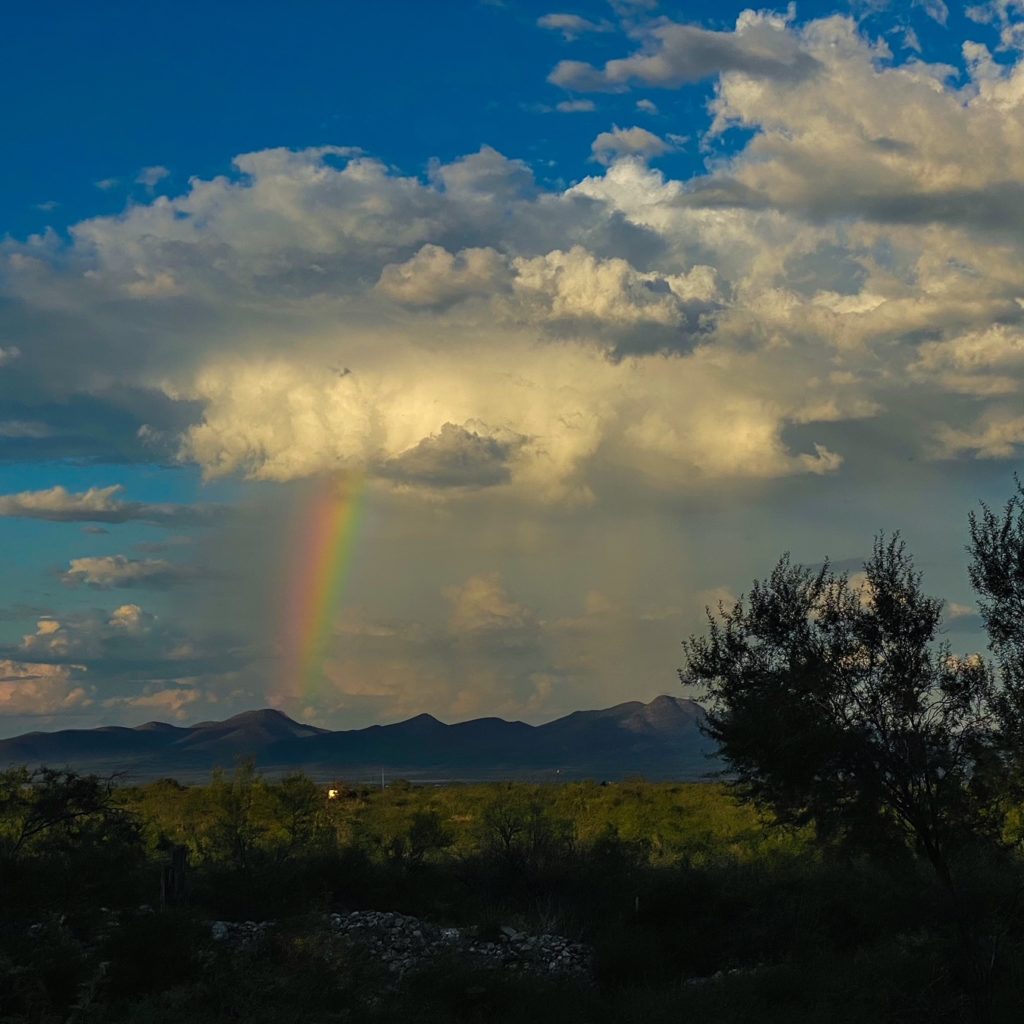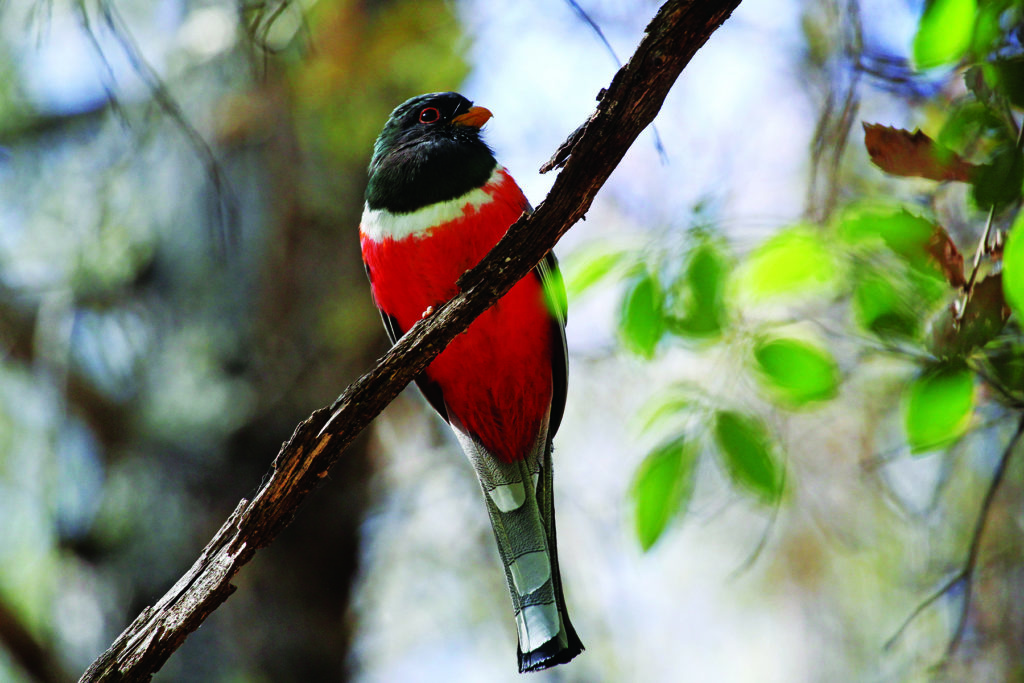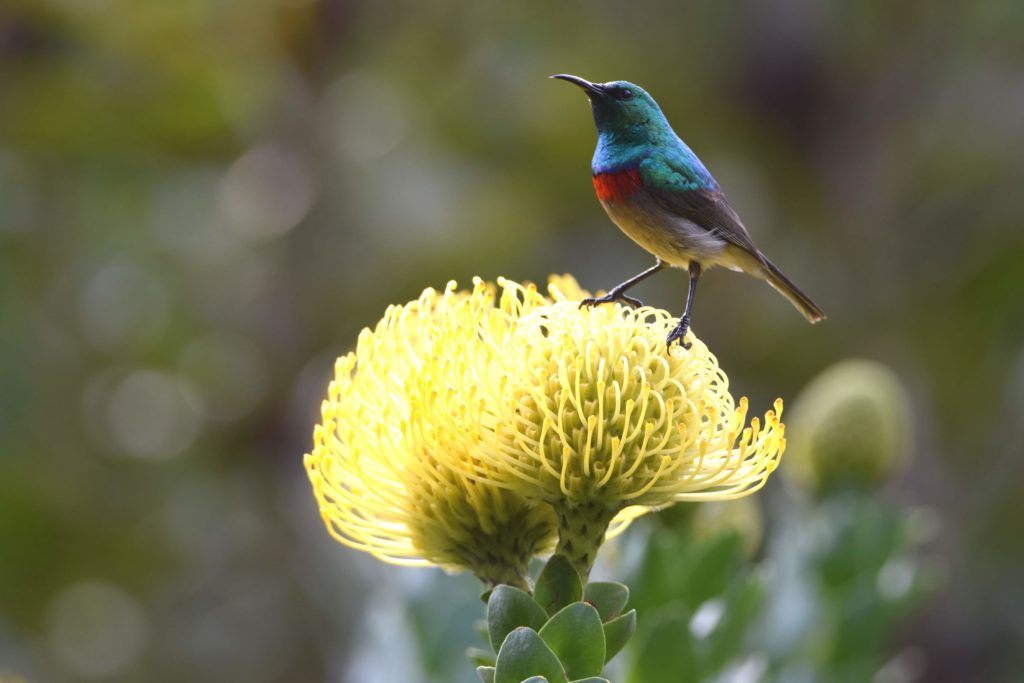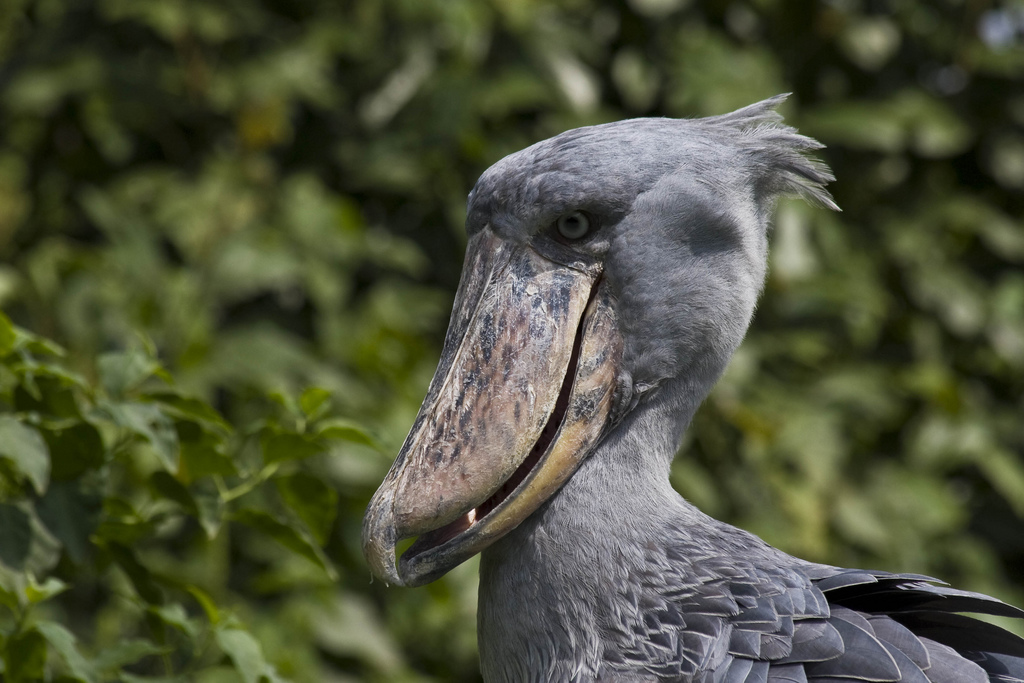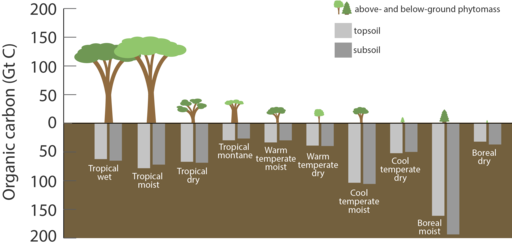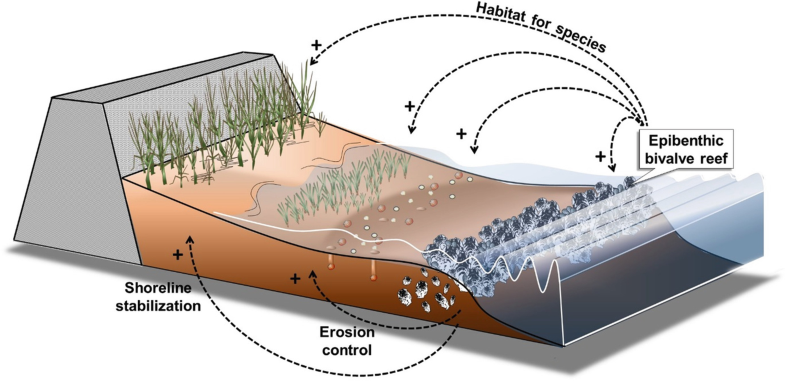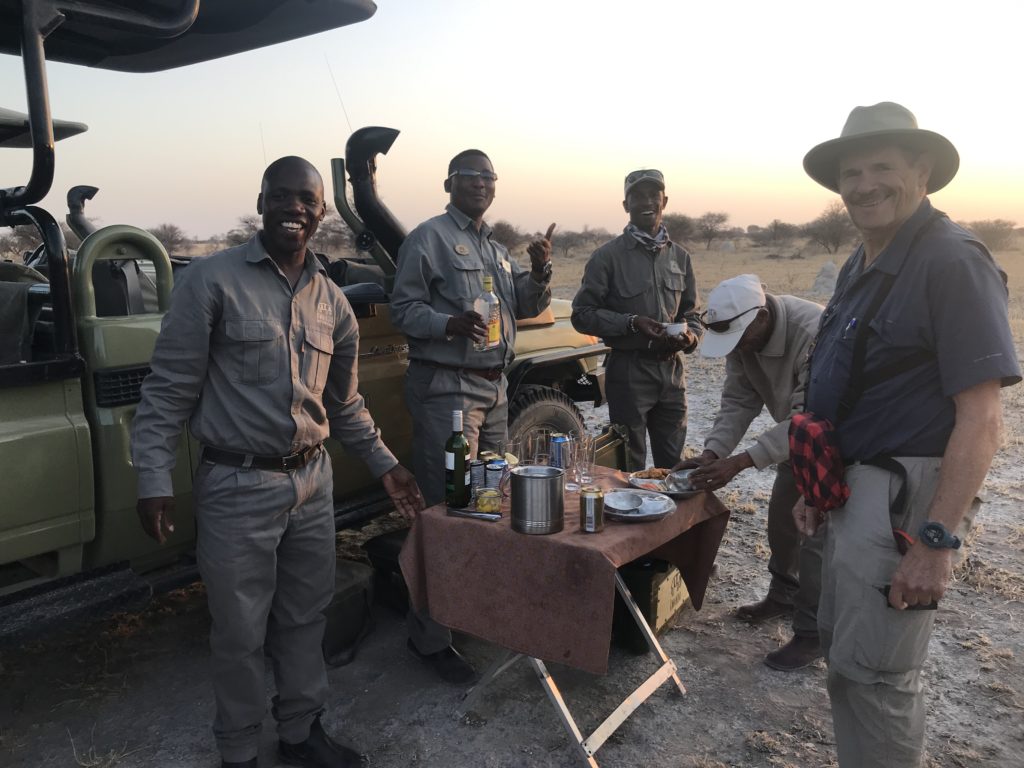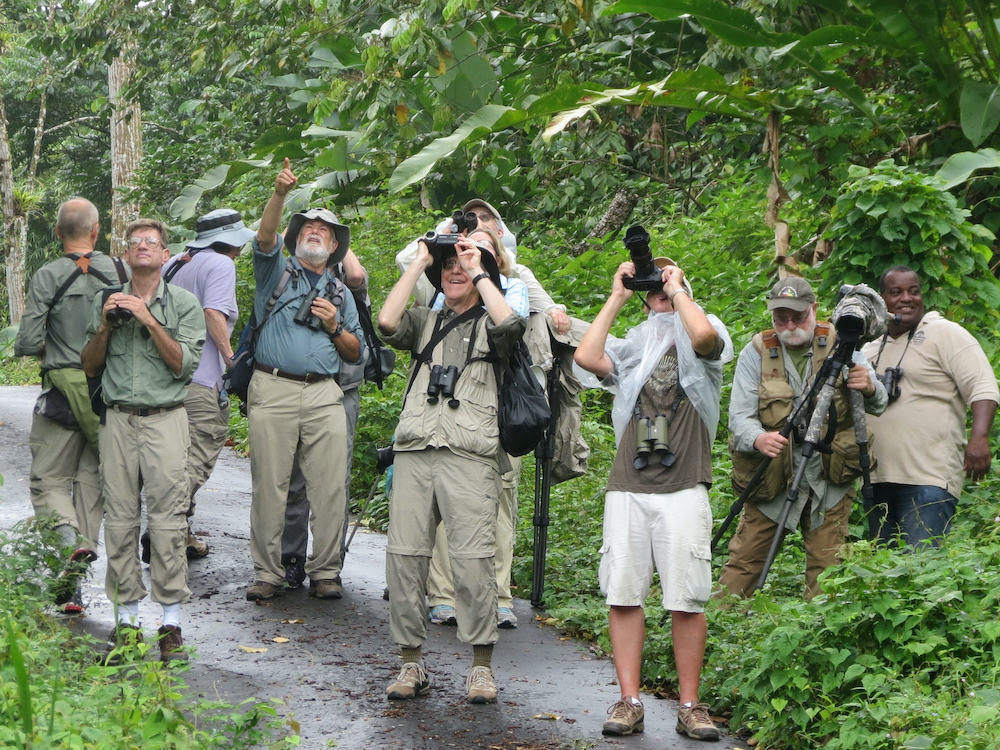Imagine a wilderness so vast that no signs of civilization can be seen or heard. Lakes shimmer among grasslands and savannas, and rivers meander through forest corridors. This is Brazil’s Pantanal, the world’s largest tropical wetland.
The wilderness that surrounds you seems timeless and immense. You lose track of how long you’ve been in the boat, searching the shores. As you gaze into rustling grass, you recall the camouflaged coat of an ocelot that you saw the previous night. The armored body of a caiman glides through waterways as you scan for jaguars stalking among the grasses, their spotted coats blending with dappled sunlight. A thrum of wingbeats snags your attention as cormorants, herons and egrets take flight. You see the scarlet flash of a Jabiru Stork.
A capybara shuffles down a mud bank into the river and paddles its pig-shaped body with webbed feet. This is the world’s largest rodent—and one of the jaguar’s favorite prey. You lean over the edge of the boat, peering deeper into the shadows on land, your eyes locking on every subtle movement.
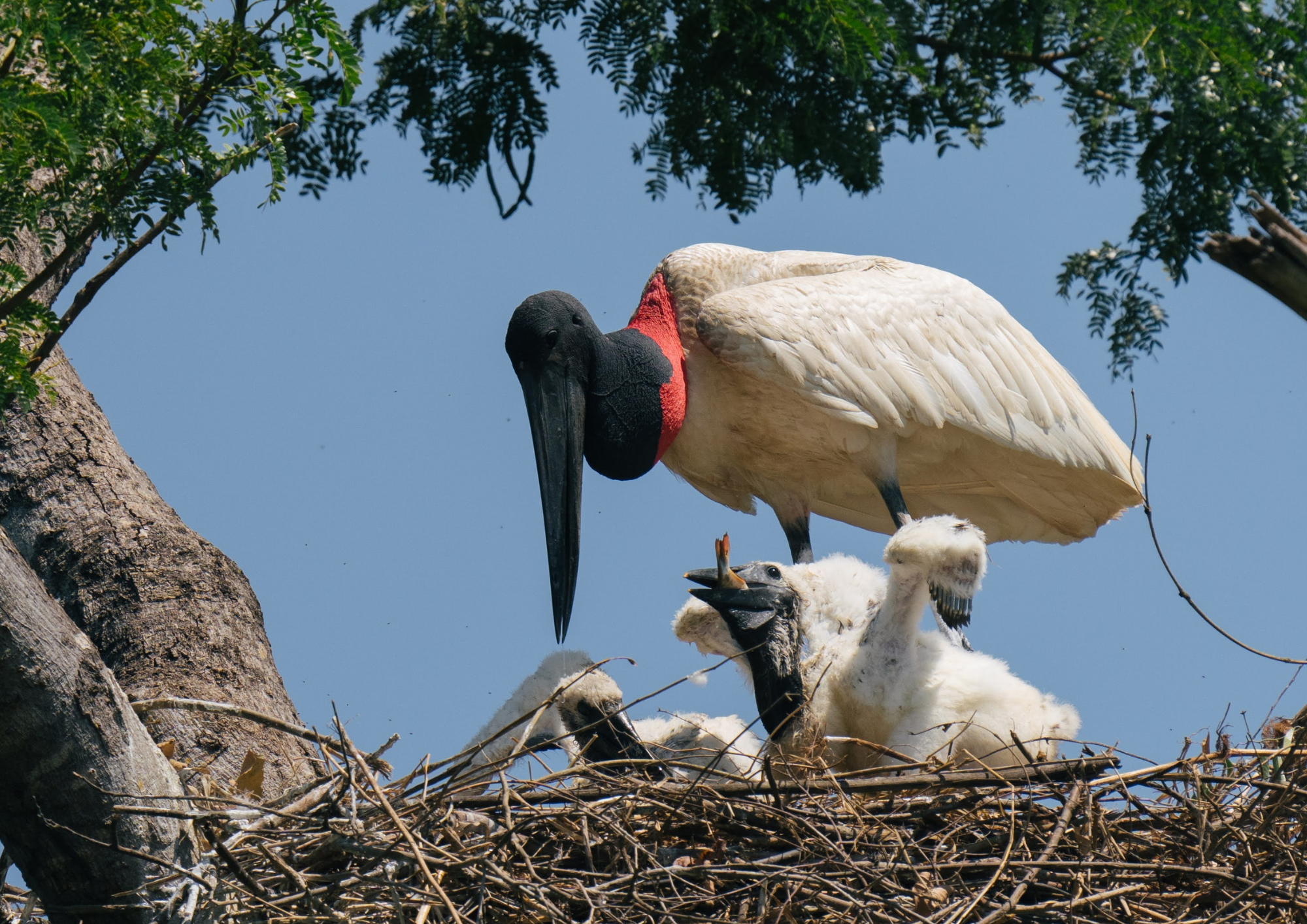
Jabiru by Wes Larson 
Gilt-edged Tanager by Wes Larson 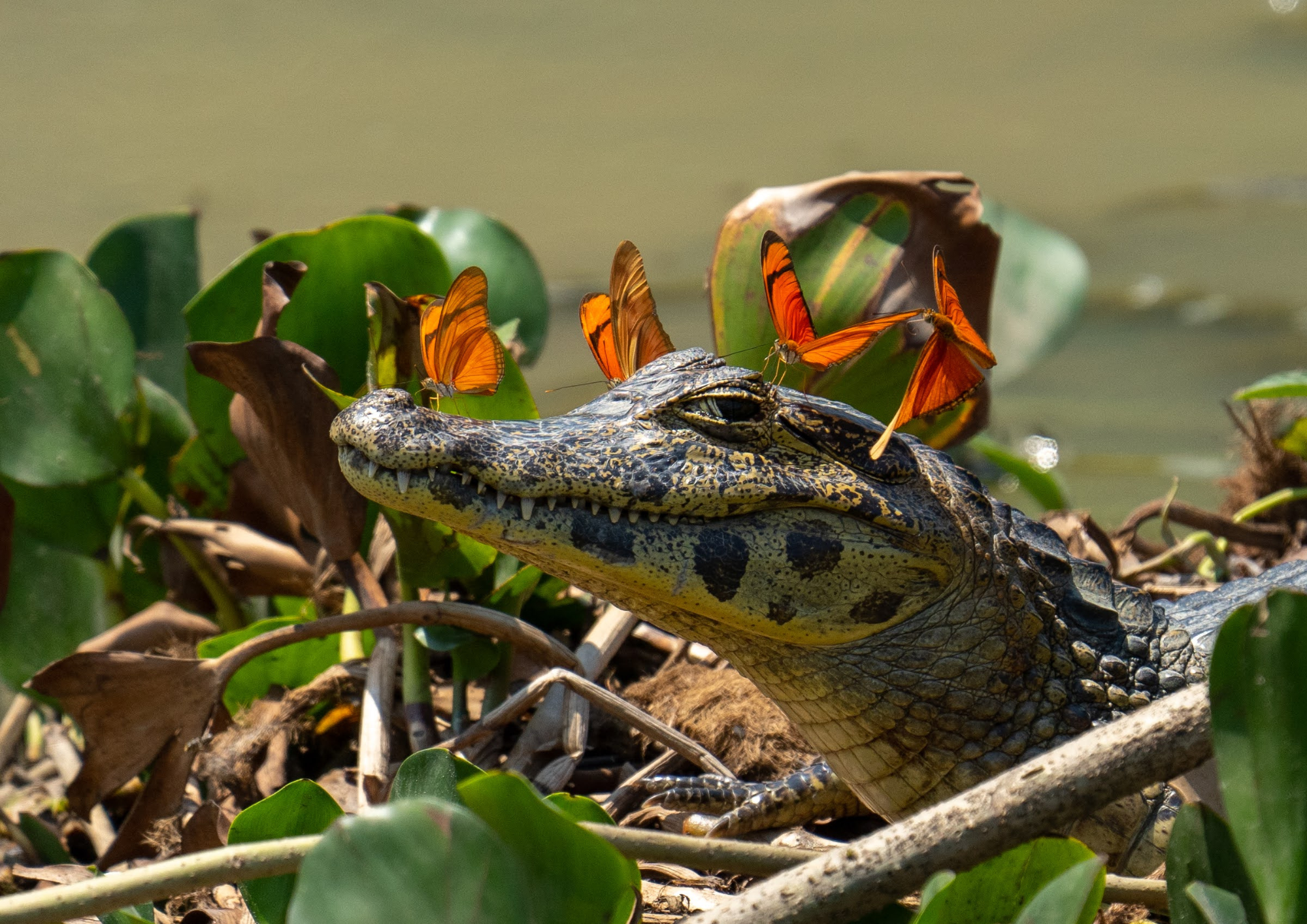
Caiman by Wes Larson 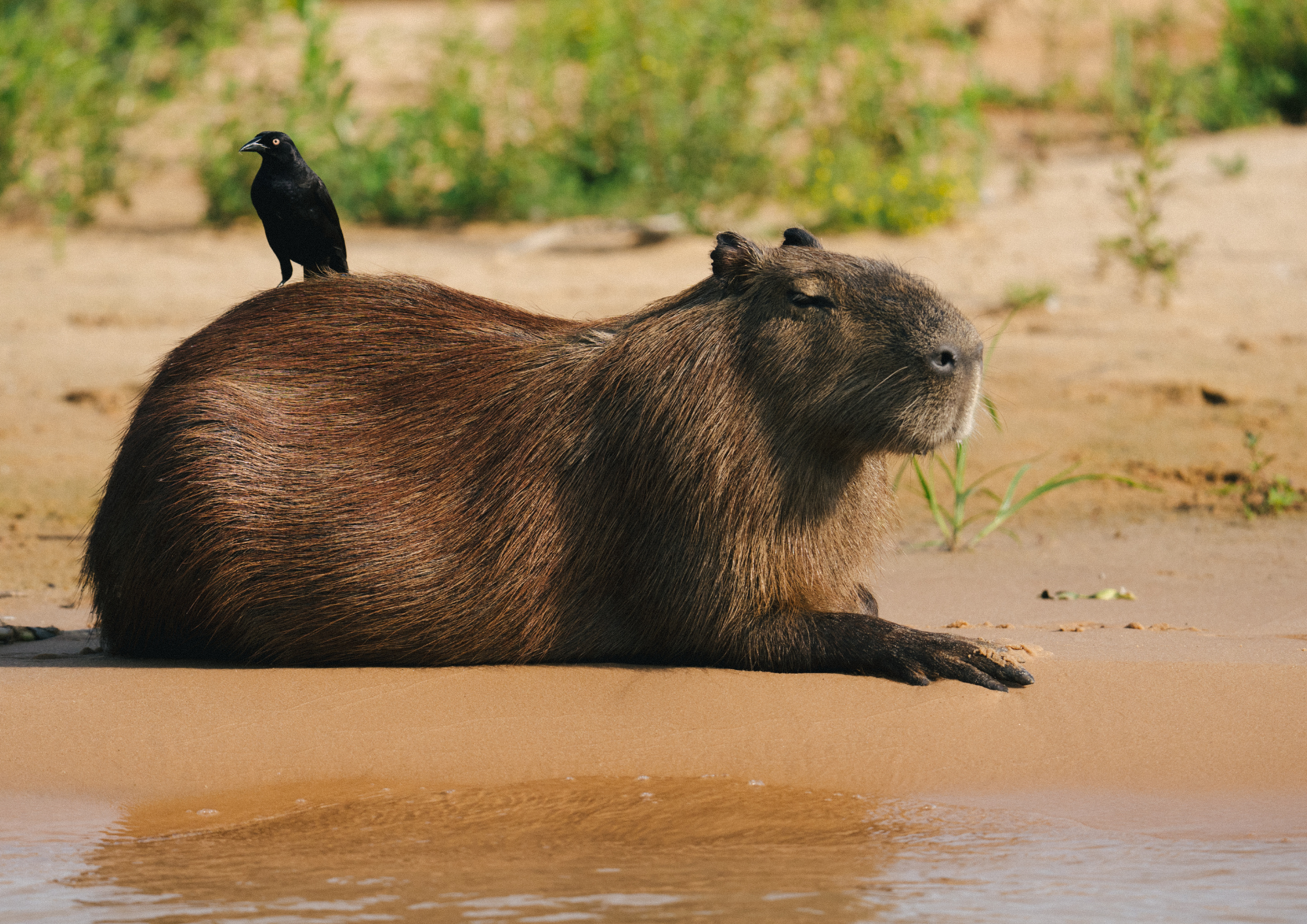
Capybara by Wes Larson 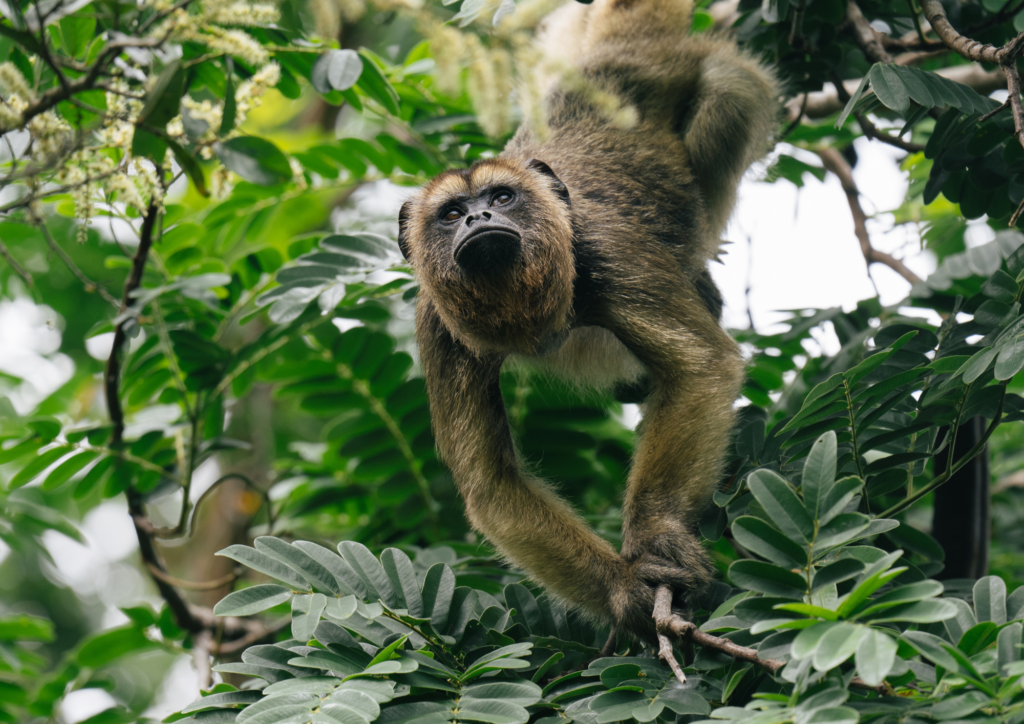
Howler Monkey by Wes Larson
A True South American Safari
Recounting all of the natural wonders that you may encounter on a Pantanal tour in Brazil requires more than a blog post—it would take a book.
To start, ten times the size of the Everglades, the Pantanal sprawls from western Brazil into Bolivia and Paraguay. The Pantanal is like an enormous body with many organs, all of them united by the pulse of the Paraguay River and its tributaries. Here, the power of the Pantanal lies in its yearly rhythm of drought and flood. Seasonal rains force rivers to overflow their banks, revitalizing the parched plains, painting the landscape vibrant hues of green and blue. As the lifeblood of water courses through the Pantanal, a maze of lagoons and marshes form. When the rains stop and the floodwaters recede, the region dries. Fertile grasslands remain, leaving a feast for scores of hungry herbivores. These plant-eaters provide food for one of the world’s most elusive and charismatic carnivores: the jaguar.
This apex predator, one of the world’s largest cats, is the star of the show. But the Pantanal is much more than the jaguar. Naturalist Journeys has created a South American safari that encompasses all that Brazil’s Pantanal has to offer. Search for iconic species like jaguar, tapir and giant anteater and explore the weave of ecological connections in the tapestry of this wetland ecosystem.
Traveling with a Naturalist Journeys Guide
Naturalist Journeys combines outstanding lead guides with local experts to showcase the remarkable biodiversity of this region to travelers with insatiable curiosity. The success of past Pantanal tours at seeing wildlife and birds has been phenomenal. For many travelers, a glimpse of a single jaguar can be the highlight of a lifetime spent searching the world for rare wildlife. In 2017, a Naturalist Journeys’ group saw seven.
Naturalist Journeys’ guide and accomplished big carnivore expert, Wes Larson recounts his time on tour in 2023:
“We had simply incredible luck with mammals on our trip, particularly with jaguar sightings, and we had fantastic luck with jaguars hunting along the river, as well as a couple really special sightings away from the river. We had TWENTY Giant Anteater sightings, which has to be a new record, and some of our group got a great look at the smaller Southern Tamandua as well.”
Subsequently, birds are abundant on these South American safaris. Tours of Brazil’s Pantanal, when combined with an Atlantic Forest pre-extension, have recorded as many as 334 bird species.
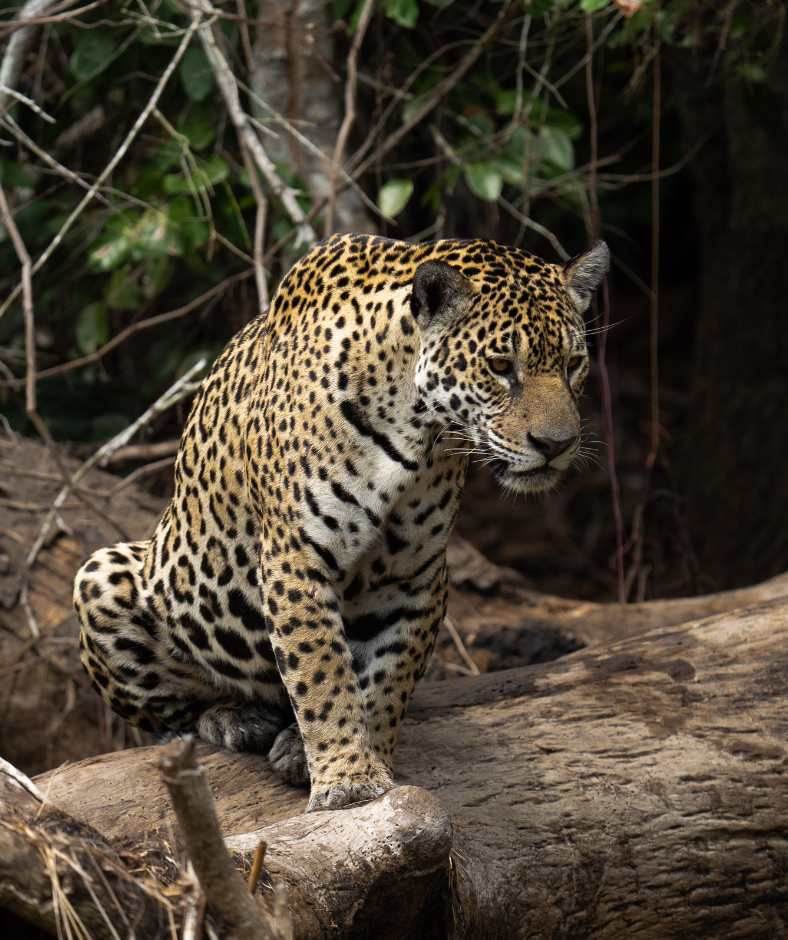
Jaguar by Wes Larson 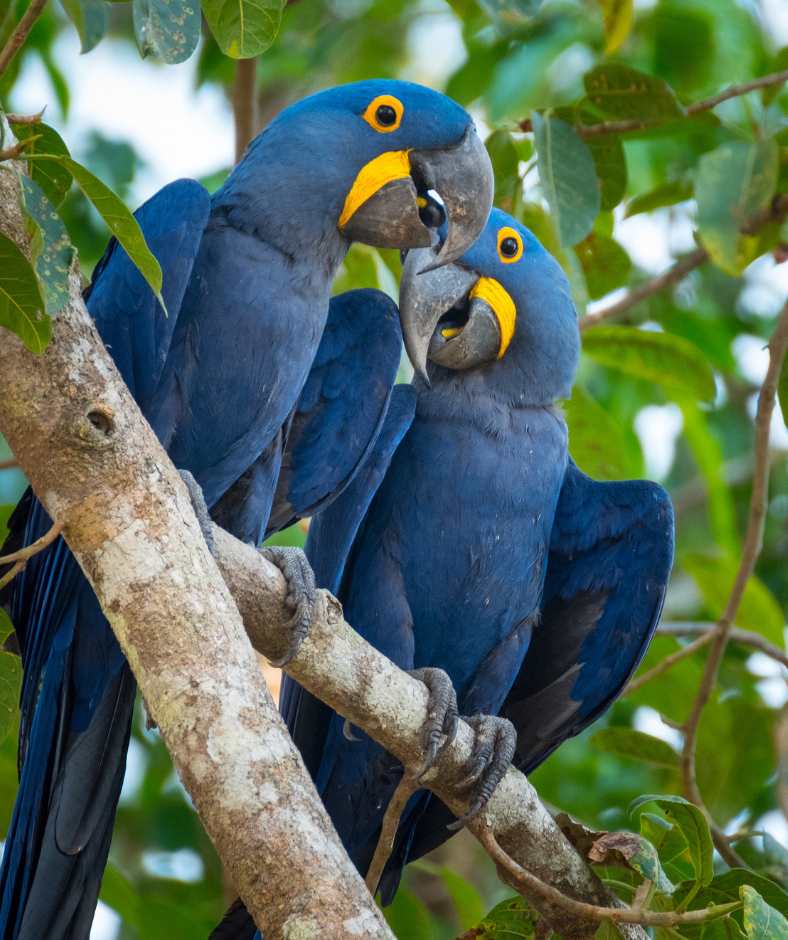
Hyacinth Macaws
Stay Among Locals
The Pantanal’s significance extends beyond the myriad species it supports. This wetland is a natural water purifier, filtering pollutants and safeguarding downstream ecosystems. It serves as an important carbon sink, absorbing greenhouse gasses and mitigating climate change. The Pantanal also nurtures local communities who have lived with its seasonal rhythms for generations.
Accommodations on Brazil’s Pantanal tours immerse travelers in a local way of life—you stay on cattle ranches, for instance. These working ranches have comfortable accommodations for guests and surrounding habitat with abundant wildlife.
After a successful safari day in the Brazilian sun, you can relax in the afternoon shade beneath ranch trees. Sip a cool drink as you watch a cobalt blue Hyacinth Macaw, the world’s largest parrot, crack open palm nuts. On the ranch grounds you might add more birds to your life list, which could include species like Greater Rhea, Toco Toucan, and Helmeted Manakin. Or you might opt to just sit back and enjoy the spectacle of so many birds and other animals new to you but common to this bounteous region.
Naturalist Journeys offers several tours to the Pantanal each year. Click the links below to learn more and experience a truly wild haven at the heart of South America.
Brazil’s Pantanal: Jaguars! And More…
Our 2024 Departures:
July 3 – 13, 2024 w/ Greg Smith
Aug 10 – 24, 2024 w/ Mason Flint

